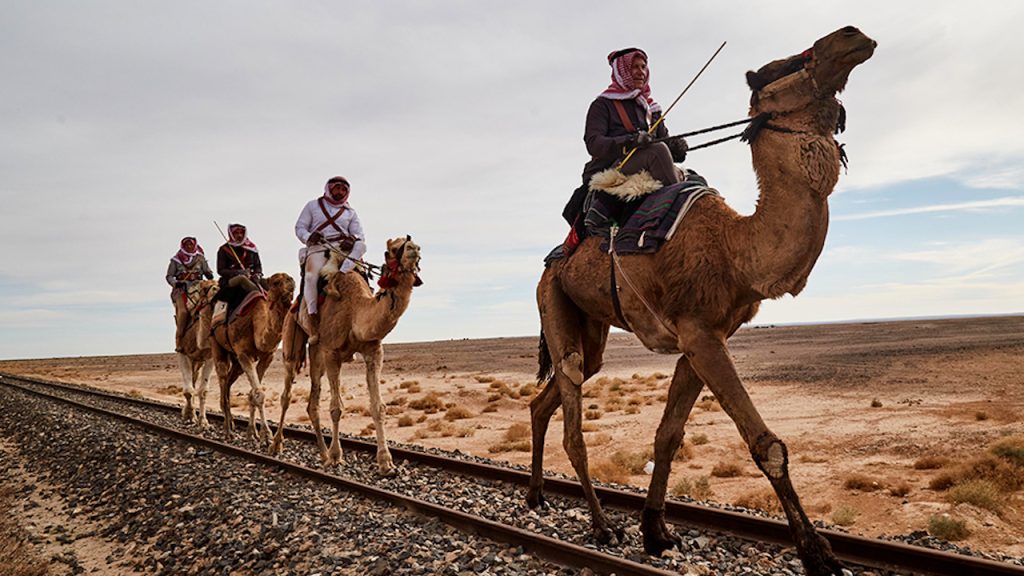More than a century after T.E. Lawrence’s legendary trek across the Arabian Peninsula, a team of four British veterans embarked on their own grueling 1,100-kilometer journey on camelback.
Their mission was to retrace history and push their own limits, navigating the same harsh terrain and extreme conditions that once tested Lawrence of Arabia and his allies.
The Team Behind the Trek
The expedition was undertaken by four British Special Forces veterans: Howard Leedham, James Calder, Craig Ross, and Martin Thompson. Each had a background in military service and endurance challenges, but only one had prior experience with camels.
Their journey was both a physical and mental test as they adapted to the demands of desert travel.
Beyond honoring Lawrence’s legacy, the trek also served as a fundraiser for the Special Forces Club Benevolent Fund, supporting veterans and their families.
Mapping the Historic Route
Lawrence’s original path began in Al-Wajh, Saudi Arabia, and ended in Aqaba, Jordan. Along the way, the team passed through historic sites that played crucial roles in the 1917 campaign. For starters, they stopped by Wadi Rum, with its towering red rock formations, which echoed the spirit of Lawrence’s alliances with Bedouin tribes.
Then, they passed by the Hejaz Railway, which was once a key Ottoman supply route and stood as a testament to wartime struggles. Finally, at the Well of Dathna, the team reflected on the harsh conditions Lawrence and his allies endured as they pushed forward to change the course of history.
Challenges of the Expedition
Enduring the desert was no easy feat. The team faced blistering heat during the day and freezing temperatures at night. Plus, rocky terrain and vast sand dunes made navigation difficult, even with modern GPS tools.
With 1,100 kilometers to cover in just 25 days, exhaustion was constant. And, while technology helped guide them, they often had to rely on instinct and sheer perseverance to push forward, experiencing firsthand the same unforgiving conditions that tested Lawrence and his men.
Encounters and Cultural Moments
Beyond the physical challenges, the journey offered moments of connection. The team sourced their camels from local Bedouins in Tabuk and spent time training in December to prepare for the trek.
Along the way, they encountered Bedouin families who welcomed them with traditional hospitality, offering water and sharing stories. These interactions added a deeper layer to the experience, bridging past and present through shared customs and desert traditions.
Besides that, camels were the backbone of this expedition, just as they were for Lawrence and his men. The team had to quickly learn how to handle and care for them, forming a bond that grew stronger each day.
Their reliance on these animals made the final farewell an emotional moment. Without the endurance and resilience of these creatures, the trek would have been impossible, reinforcing their timeless role in desert travel.
The Legacy of Lawrence of Arabia
T.E. Lawrence was a British officer who became a key strategist in the Arab Revolt, helping Arab forces strike against the Ottomans. His most famous journey, the 1917 trek through the Arabian Desert, led to the capture of Aqaba—a pivotal moment in World War I.
His exploits became the stuff of legend, immortalized in books and films, with his name still evoking images of adventure and intrigue.
A Living Tribute to History
By completing this remarkable journey, the team not only honored Lawrence’s legacy but also deepened their own understanding of the region’s history. The trek proved to be a powerful testament to endurance, resilience, and the spirit of adventure.
More than a reenactment, it was a reminder that history is not just something to be studied—it can be experienced, relived, and carried forward into the present!
WE ALSO SAID: Don’t Miss…Women Trek 125 Kilometers From Abu Dhabi to Al-Ain to Honor the UAE Heritage!



